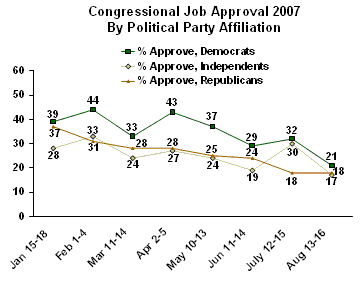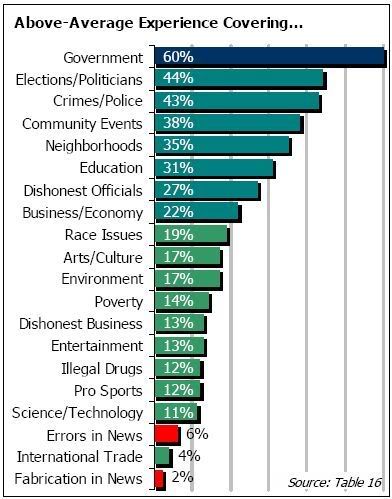LTG (Ret.) Sanchez's keynote speech at the 6th annual Military Reporters & Editors (MRE) conference has been badly reported in the news. I've read the MRE transcript and watched the C-SPAN video. The transcript is pretty good, but the video is much, much better. The MRE transcript misses some of Sanchez's speech and has none of the Q&A. The C-SPAN video is an hour long, but you don't need to watch the first 8 1/2 minutes or the last four minutes.
I recommend the video, it is worth at least 48 minutes of your time. I also recommend you start the download, hit pause on the Real player (the video continues to download) and come back when it's all downloaded. Forward the scroll bar to about the 08:30 mark and watch when you can get 48 minutes of (mostly) uninterrupted time.
The first 10 minutes of Sanchez's speech is spent criticizing the media. The rest of his speech (12 minutes) is spent criticizing (primarily) the political leadership. The Q&A lasts 26 minutes.
I do want to pull out one part of Sanchez's speech criticizing America's "interagency" leadership (about 27:40 into the video):
Achieving unity of effort in Iraq has been elusive to date primarily because there is no entity that has the authority to direct the actions of our interagency. As I stated before, our National Security Council has been a failure. Furthermore, America's ability to hold the interagency accountable for their failures in this war is non-existent. This must change. We probably need to implement a Goldwaters-like Nichols act for the interagency. As a nation we must recognize that the enemy we face is committed to destroying our way of life. This enemy is arguably more dangerous than any threat we faced in the twentieth century. Our political leaders must place national security objectives above partisan politics, demand intergency unity of effort, and never again commit America to war without a grand strategy that embraces the basic tenets of the Powell doctrine. [emphasis added]
I've written previously about this in
The Surge as Foreign Internal Defense. Specifically, from Joint Publication 3-07.1,
Joint Tactics, Techniques, and Procedures for Foreign Internal Defense (FID) (1.6MB pdf):
Ensure Unity of Effort. As a tool of US foreign policy, FID is a national-level program effort that involves numerous USG [US Government] agencies that may play a dominant role in providing the content of FID plans. Planning must coordinate an integrated theater effort that is joint, interagency, and multinational in order to reduce inefficiencies and enhance strategy in support of FID programs. An interagency political-military plan that provides a means for achieving unity of effort among USG agencies is described in Appendix D, Illustrative Interagency Political-Military Plan for Foreign Internal Defense.
How long, how many more times, will we kick the "new
Goldwaters-Nichols Act" for "interagency jointness" down the road?
Let's review, shall we?
From a military perspective, Joint Pub 3-08
Vols I &
II (pdf),
Interagency Coordination During Joint Operations, describe what agencies are involved and what they do. The National Defense University has an
html excerpt online from the
1996 editions of JP 3-08 listing the agencies. Both pubs were updated and republished in March 2006.
In May 1997, President Clinton promulgated
Presidential Decision Directive 56:
Managing Complex Contingency Operations. Read it. It further defined interagency planning and coordination for "complex contingency operations."
In 1998, Mark Walsh and Micheal J. Harwood published a good article in
Parameters titled
Complex Emergencies: Under New Management, which further describes interagency coordination during "complex emergencies," "complex contingency operations" and Clinton's PDD-56.
In December 1999, Rowan Scarborough reported for the
Washington Times:
"NSC not stepping forward in leadership role," states the study conducted by A.B. Technologies in Alexandria for the Joint Chiefs of Staff....
The documents, dated November, say none of the heads of the military's postgraduate schools, such as the National Defense University, is "directly engaged in the training effort."
What's more, most agencies told the consultants they have no role in carrying out PDD 56, when in fact they do.
"There are no agency accountability checks to see what has been done, who has done it," the report says.
The report presents the ironic situation of the NSC, which had the lead in carrying out PDD 56, not following a directive sent out by the president it advises.
Moreover, PDD 56 was largely ignored by an administration that has sent American troops on a record number of so-called "contingencies" on foreign soil. The missions have included peacekeeping in Somalia, Haiti, East Timor and Bosnia, as well as air strikes on targets in Iraq, Bosnia, Sudan, Afghanistan and Serbia.
On February 13, 2001, the Bush administration promulgated
National Security Presidential Directive (NSPD) 1,
Organization of the National Security Council System. During Bush's first term, the two names most responsible for interagency coordination concerning Iraq were Condoleezza Rice as the National Security Advisor and Elliot Abrams as the Special Assistant to the President and Senior Director of the NSC Policy Coordination Committee for Democracy, Human Rights, and International Operations and later as the Special Assistant to the President and Senior Director of the NSC Policy Coordination Committee for Near East and North African Affairs.
The
U.S. Commission on National Security/21st Century began a comprehensive review of America's national security in July 1998 and has published 3 volumes. The third volume,
Road Map for National Security: Imperative for Change (pdf), was published February 15, 2001. This is a 156-page report, but I highly recommend at least reading the 10-page Executive Summary. You might also be interested in reviewing the 50 recommendations in Appendix 1:
This appendix lists all of the Phase III Report’s major recommendations in order of
their presentation. The recommendations are numbered sequentially and grouped by Section. The page on which the recommendation appears in the report is noted in the box. Those recommendations in red type indicate recommendations on which Congressional action is required for implementation. Those in blue type can be implemented by Executive Order. Those in green type can be implemented by the head of an Executive Branch department or agency, or by the Congressional leadership, as appropriate.
Also in 2001, the National Defense University was funded "
to develop and conduct an interagency training program." This became the
Interagency Transformation, Education, and After-Action Review (ITEA) Program. I recommend visiting their website. There is a lot of good information there, and the foundation for developing training for a "National Security Service Corps." There is also a good set of high-level
briefing slides (ppt) on NSPD-1 there.
The Center for Strategic & International Studies has also published two volumes under its
Beyond Goldwater-Nichols effort:
Beyond Goldwater-Nichols (BG-N) is a three-phased effort to explore the next era of defense reform. Its primary goal is to develop an integrated set of practical and actionable recommended reforms for organizing both the U.S. military and national security apparatus to meet 21st century challenges. As part of its outreach to build the case for necessary reforms, the BG-N study team serves as an honest broker among the various stakeholders, including between and among the Defense Department (DoD), the State Department, the White House, and the Congress, as well as among the various parties in DoD....
The BG-N study team released the Phase 1 Final Report in March 2004, in which a number of areas were addressed, including: reassessing the civilian, joint, and service balance; building a strategy-driven, more efficient resource allocation process; strengthening the cadre of national security and defense civilians; improving DoD's and the U.S. government’s ability to conduct interagency and combined operations; and more. Phase 2 of the BG-N study was released in July 2005. With seven working groups this phase tackles a slate of issues, including: capabilities for 21st century missions; the regional and functional command structures; the U.S. government’s design in light of 21st century challenges; the defense acquisition process; the commercial-like defense agencies; joint officer management and professional military education; and new domains of warfare.
"On August 5, 2004, Secretary Powell announced the creation of the
Office of the Coordinator for Reconstruction and Stabilization (S/CRS) to enhance our nation's institutional capacity to respond to crises involving failing, failed, and post-conflict states and complex emergencies [
link added]." Under the S/CRS is the
S/CRS Inter-Agency Team.
On December 7, 2005, the Bush administration promulgated NSPD-44,
Mananagement of Interagency Efforts Concerning Reconstruction and Stabilization. This makes the State Department the "focal point":
(i) to coordinate and strengthen efforts of the United States Government to prepare, plan for, and conduct reconstruction and stabilization assistance and related activities in a range of situations that require the response capabilities of multiple United States Government entities and (ii) to harmonize such efforts with U.S. military plans and operations.
and so on ...
The "interagency process" needs to be legislated and funded, for the same reasons that the "joint process" in the military needed the Goldwater-Nichols Act. There's been a significant amount of research and effort in this area over the last decade. The
Department of Homeland Security has statutory interagency responsibility (and accountability) for domestic operations.
What department or equivalent "
unified commander" in the field is accountable for "interagency jointness" for all the other operations?
Other References:
National Defense University bibliography on Interagency CoordinationU.S. Military Operations in Iraq: Planning, Combat and Occupation (April 26, 2006)
OIF Phase IV: A Planner's Reply to Brigadier Aylwin-Foster (March-April 2006)
Phase IV Operations: Where Wars are Really Won (May - June 2005)
Transforming for Stabilization and Reconstruction Operations (November 12, 2003)
Previous:
The Surge as Stabilty and SupportThe Surge as Foreign Internal DefenseWould Sun Tzu Surge?Si vis pacem, para bellumIraq v2.0








